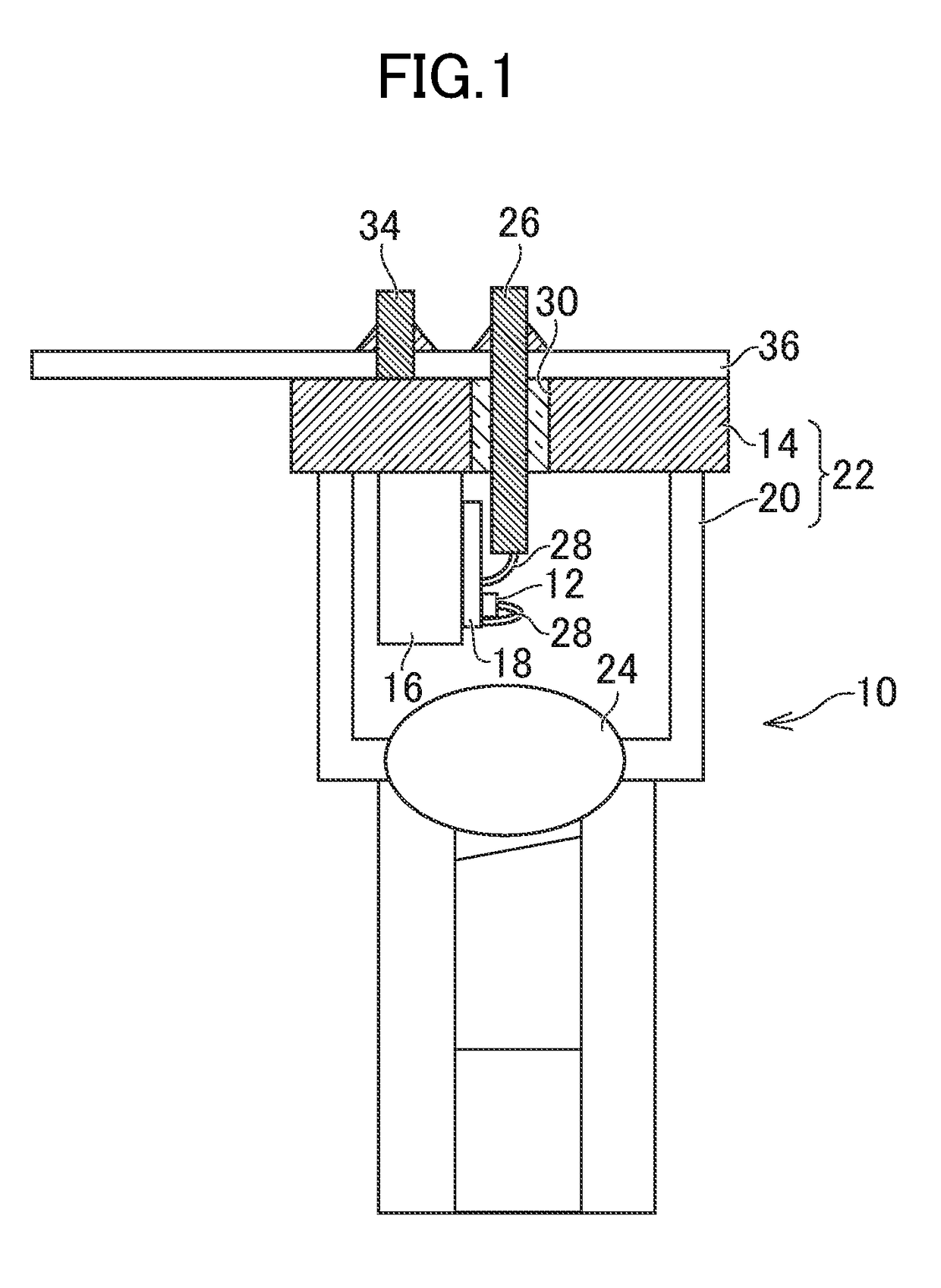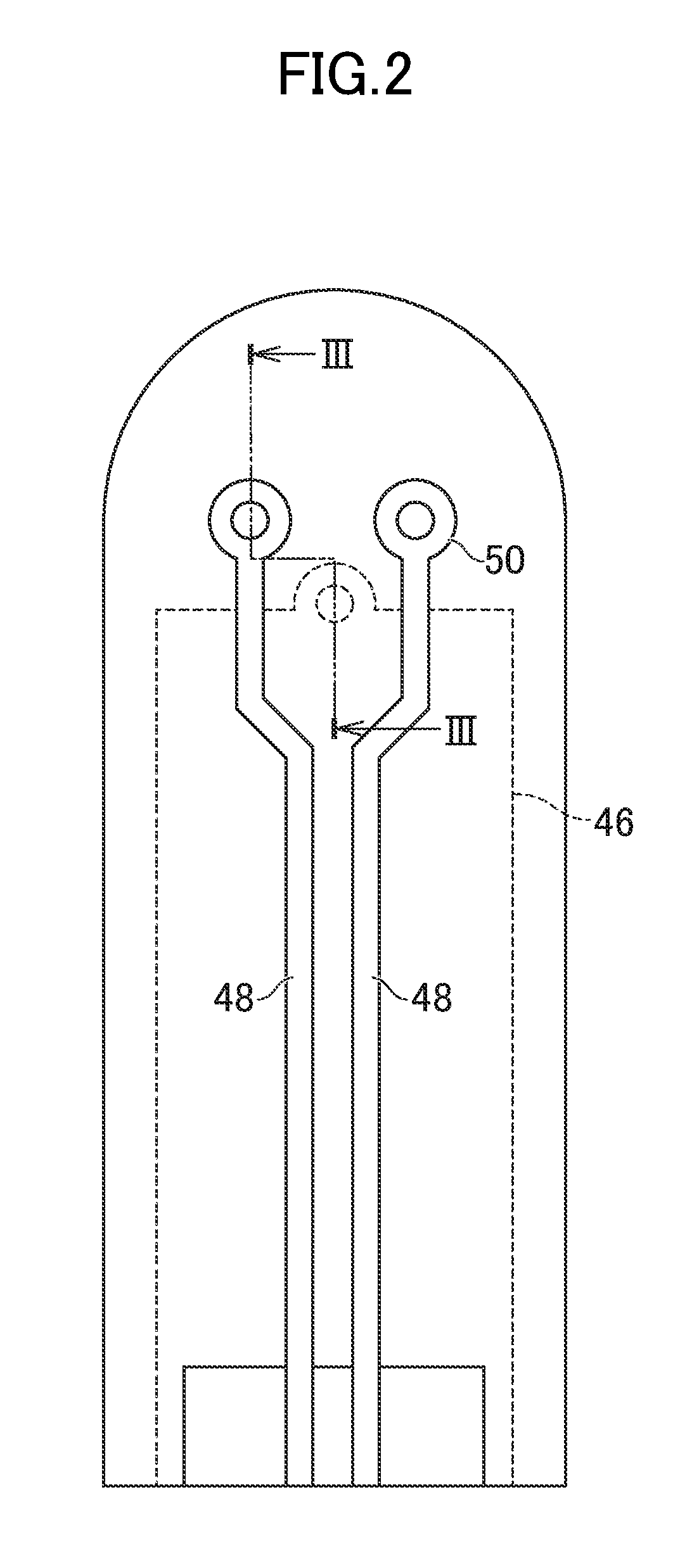Optical module
a technology of optical modules and optical signals, applied in the field of optical modules, can solve the problems of lowering the waveform quality of optical signals, complicated soldering, affecting the processing cost and yield of optical modules, etc., and achieves the effect of not increasing a cost, and excellent high-frequency characteristics
- Summary
- Abstract
- Description
- Claims
- Application Information
AI Technical Summary
Benefits of technology
Problems solved by technology
Method used
Image
Examples
first embodiment
[0033]FIG. 1 is a sectional view for schematically illustrating an optical module according to a first embodiment of the present invention. The optical module includes an optical subassembly 10 configured to convert at least one of an optical signal or an electrical signal into the other. Examples of the optical subassembly 10 include an optical transmitter module (transmitter optical subassembly; TOSA) that includes a light emitting element, e.g., a semiconductor laser 12, and is configured to convert an electrical signal into an optical signal and transmit the optical signal, an optical receiver module (receiver optical subassembly; ROSA) that includes a light receiving element represented by a photodiode and is configured to convert a received optical signal into an electrical signal, and a bidirectional optical subassembly (BOSA) having both the functions of those optical subassemblies.
[0034]The invention of the subject application can be applied to any of the above-mentioned op...
second embodiment
[0047]FIG. 4 is a sectional view for illustrating the details of an optical module according to a second embodiment of the present invention. In this embodiment, an insulating material 232 is filled so that a projecting portion 258 maybe formed that protrudes from a surface of a stem 214. The projecting portion 258 is formed by the insulating material 232 creeping along a signal lead 226 by the surface tension, due to variations between lots. In such a case, a flexible insulating layer 256 has a recessed portion 260 in contact with the projecting portion 258. That is, the flexible insulating layer 256 absorbs the projecting portion 258 of the insulating material 232, and hence a wiring substrate 236 is mounted on the stem 214 without forming any air gap therebetween. It is therefore not necessary to consider how much the insulating material 232 creeps up, when designing the stem 214, thereby providing an effect of reducing the price of the stem 214. The description made in the first...
third embodiment
[0048]FIG. 5 is a sectional view for illustrating the details of an optical module according to a third embodiment of the present invention. In this embodiment, a protective film 354 formed on a first surface 340 overlaps a region other than a stem 314. The protective film 354 is not formed between the stem 314 and a wiring substrate 336, and hence a wiring pattern 344 and a signal lead 326 can be joined to each other at a position close to the stem 314. Impedance mismatch can therefore be reduced compared to the first embodiment, and hence excellent high-frequency characteristics can be expected. The description made in the first embodiment is applied to the third embodiment about the remaining structures.
PUM
 Login to View More
Login to View More Abstract
Description
Claims
Application Information
 Login to View More
Login to View More - R&D
- Intellectual Property
- Life Sciences
- Materials
- Tech Scout
- Unparalleled Data Quality
- Higher Quality Content
- 60% Fewer Hallucinations
Browse by: Latest US Patents, China's latest patents, Technical Efficacy Thesaurus, Application Domain, Technology Topic, Popular Technical Reports.
© 2025 PatSnap. All rights reserved.Legal|Privacy policy|Modern Slavery Act Transparency Statement|Sitemap|About US| Contact US: help@patsnap.com



